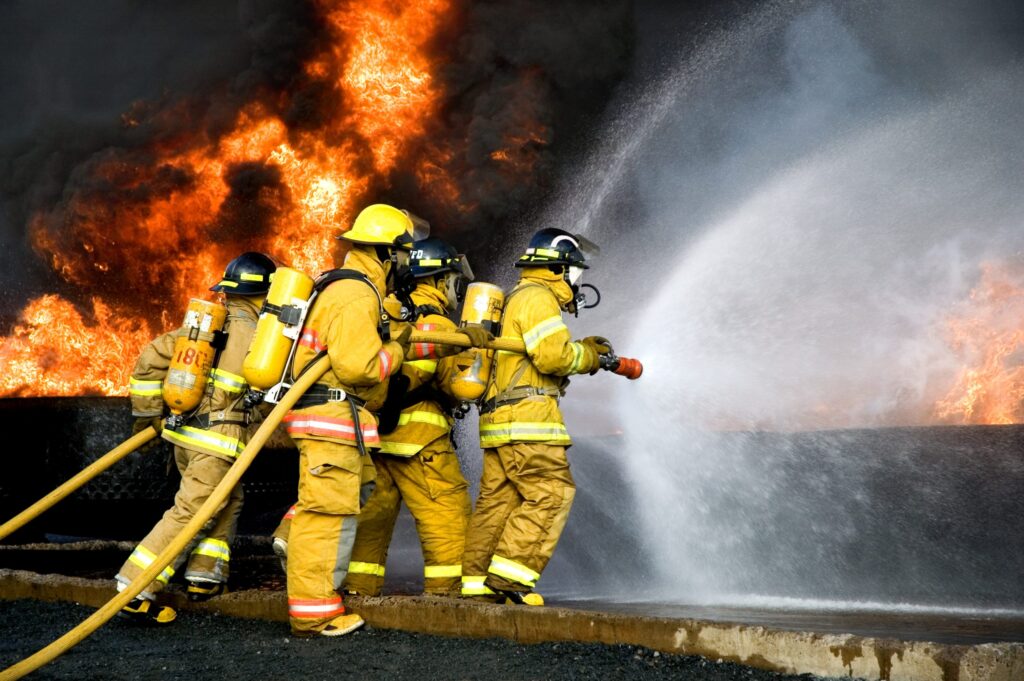Firefighters have traditionally focused on putting out fires and rescuing people. However, their role has changed significantly in recent years. Today, many fire departments handle emergency medical calls alongside traditional duties. According to the U.S. Fire Administration, in 2020, nearly 64% of fire department calls required emergency medical services. This shift ensures faster response times and better survival rates in medical emergencies. Communities benefit when firefighters provide life-saving medical care before ambulances arrive. With the evolving demands of emergency services, many are now pursuing advanced certifications, such as Fire Officer 1, to enhance their leadership skills.
The Shift from Fire Suppression to Emergency Medical Response
Firefighting has historically centered on controlling fires and conducting rescues. However, the number of fire-related calls has decreased over time. Meanwhile, medical emergencies have become a larger portion of fire department responses. Many fire departments now respond to more medical calls than fire-related incidents. This shift results from increasing healthcare demands and the need for rapid emergency care. Fire stations are strategically located, making them ideal for quick medical responses. Firefighters equipped with EMS training can stabilize patients before paramedics arrive. A U.S. Fire Administration report highlights that fire stations’ strategic placement significantly contributes to reducing emergency response times. This expansion improves public safety and reduces preventable deaths.
How Firefighters Are Trained for Emergency Medical Services
Firefighters undergo rigorous training to prepare for various emergency situations. Many departments require basic EMS certification as part of firefighter training. Some firefighters become Emergency Medical Technicians (EMTs) or even paramedics. To further their expertise, many enroll in online fire officer classes to balance their training with demanding schedules. The level of training varies depending on department policies and community needs. EMT training covers basic life support, while paramedics learn advanced procedures. Training includes CPR, wound care, airway management, and trauma response. Firefighters also receive ongoing education to maintain their skills. This training ensures they provide high-quality care in medical emergencies.
Benefits of Firefighters Providing Medical Services
Faster Response Times
Fire stations are strategically placed to serve communities quickly. Many fire departments respond to medical emergencies before ambulances arrive. Firefighter-medics can begin life-saving treatments while waiting for paramedics. This immediate care improves patient outcomes and survival rates. Every second counts in medical emergencies, making fast response times crucial. Firefighters’ rapid intervention prevents conditions from worsening. Their presence also reassures patients and family members. Fire crews arriving early can significantly impact patient recovery.
Increased Survival Rates in Medical Emergencies
Firefighters provide essential medical care before advanced medical personnel arrive. They perform CPR, control bleeding, and manage airway obstructions. These actions can stabilize patients during life-threatening situations. Studies show that early intervention improves survival rates. For example, firefighters treating heart attack victims improve chances of recovery. Their ability to provide medical care increases positive outcomes. Communities with well-trained firefighter-medics see lower fatality rates in emergencies. Prompt care is especially important in cardiac and trauma incidents.
Cost-Effectiveness and Resource Optimization
Firefighter-medics reduce overall emergency response costs. Training firefighters in EMS eliminates the need for additional personnel. This dual role improves resource efficiency and reduces response delays. Cities save money by integrating EMS into fire department operations. Fewer separate emergency units reduce redundancy in dispatching services. By obtaining certifications like Fire Instructor 1, they can also train new recruits, further optimizing resources. Efficient medical response minimizes long-term healthcare costs. Communities benefit from cost-effective emergency services that improve public safety.
Fire Department EMS Models Across Different Regions
Integrated Fire-EMS Systems
Some cities fully integrate EMS into fire department operations. Firefighters receive advanced medical training and respond to medical emergencies. This model ensures quick medical assistance and seamless patient care. Many metropolitan areas use this approach to maximize efficiency. Fire stations operate as emergency care hubs in these systems. Fully integrated models improve coordination between fire and medical teams. Firefighters in these departments often handle the majority of emergency medical calls.
Third-Service EMS Models
Some communities separate EMS from fire department operations. Third-service EMS agencies operate independently but coordinate with firefighters. These agencies employ paramedics dedicated solely to medical response. This model allows specialization in advanced medical care. However, response times can be longer if fire crews arrive first. Some cities use this model to balance workloads between fire and EMS teams. Challenges include higher staffing costs and potential delays in emergency care.
Private vs. Public EMS Collaboration
Some cities rely on private ambulance services for emergency medical response. These companies operate alongside public fire departments. Private EMS providers contract with municipalities to supplement emergency services. Collaboration between fire departments and private EMS can improve efficiency. Challenges include service consistency and response time disparities. Public-private partnerships help expand medical response capabilities. Funding models determine whether communities adopt this approach.
Challenges in Expanding Firefighter EMS Responsibilities
Increased Workload and Burnout Risks
Firefighters face greater stress when handling both fire and medical emergencies. Increased call volumes lead to longer shifts and mental fatigue. Balancing fire suppression and medical duties can be challenging. Departments must implement wellness programs to prevent burnout. Firefighter-medics require emotional resilience to handle traumatic incidents. Mental health support is essential to maintain job performance. Managing stress helps firefighters provide high-quality care. Some departments rotate responsibilities to balance workload demands. Pursuing Fire Officer 2 certification can help them stay abreast of the latest in emergency response leadership.
Training and Skill Maintenance
Firefighter-medics must continuously update their medical skills. Ongoing training ensures proficiency in life-saving techniques. Firefighters must stay current with evolving medical protocols. Departments provide refresher courses and hands-on simulations. Skill retention requires regular exposure to medical situations. Continuous education helps firefighters maintain confidence in medical interventions. Some cities require periodic recertification for EMTs and paramedics. Fire departments must invest in training resources to support skill development.
Budget and Resource Allocation
Expanding firefighter EMS services requires additional funding. Training programs and medical equipment increase operational costs. Fire departments must balance funding between fire suppression and EMS. Some communities struggle with budget constraints for dual-role training. Cost-effective solutions include regional training partnerships. Grant funding supports expansion of EMS programs. Resource allocation affects service availability in different regions. Strategic planning ensures sustainable emergency response models.
The Role of Technology in Firefighter EMS Response
Modern technology enhances firefighter EMS capabilities. Advanced medical equipment improves pre-hospital care. Portable defibrillators and airway management tools increase survival rates. GPS and dispatch software optimize response times. Enrolling in EVOC training ensures firefighters are proficient in operating emergency vehicles safely. Drones assist with scene assessment in complex emergencies. Telemedicine connects firefighters with remote medical experts. Digital patient records improve information sharing between agencies. These innovations enhance the efficiency of emergency medical care.
Community Paramedicine and Preventive Care Initiatives
Firefighters increasingly focus on preventive healthcare. Community paramedicine programs reduce emergency room visits. Achieving Fire Inspector certification enables them to conduct safety inspections, preventing emergencies before they occur. Firefighter-medics educate residents on chronic disease management. Home visits provide medical assessments and early intervention. Preventive care lowers healthcare costs and reduces 911 calls. Some fire departments run vaccination clinics and wellness programs. These initiatives improve public health and safety. Firefighter involvement in preventive care strengthens community resilience.
Key Takeaways and Final Insights
Supporting firefighter-medics strengthens emergency response capabilities. Encouraging them to pursue advanced certifications, such as Fire Instructor 2, ensures they are well-prepared for diverse challenges. Advances in technology and training will shape the future of firefighter EMS. Departments may introduce new specializations within EMS roles. Public safety depends on continued investment in emergency services.







